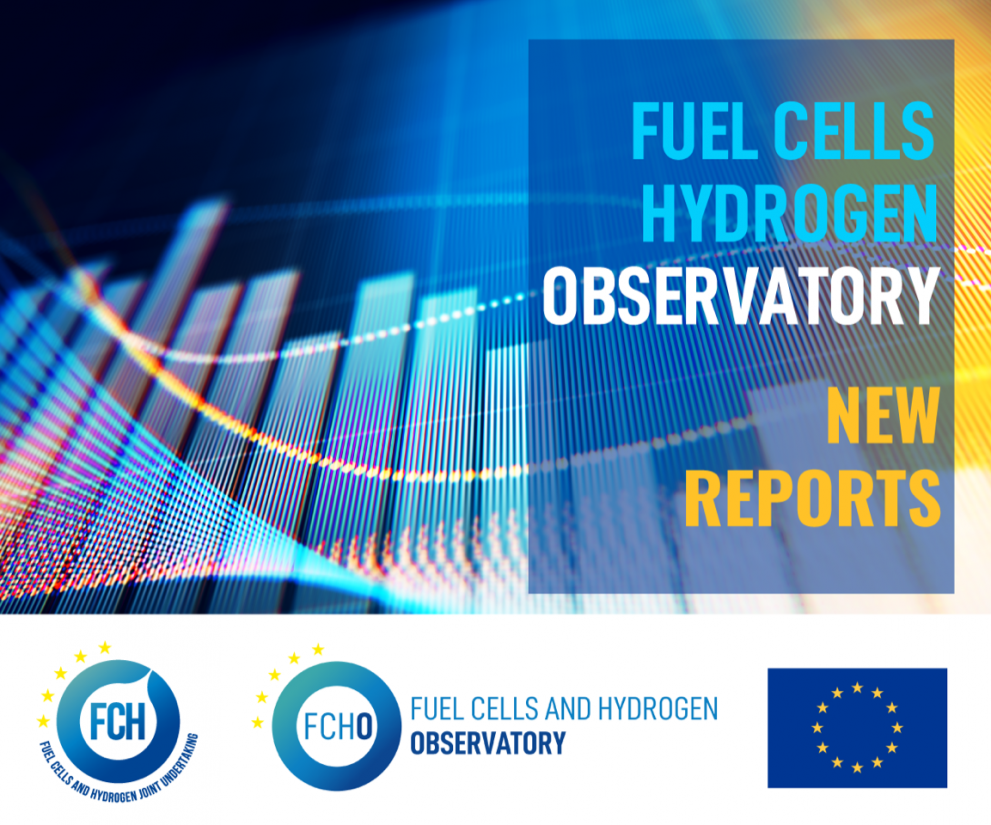
The Fuel Cell and Hydrogen Observatory (FCHO) has recently released a new set of reports summarising the developments over the past year in the areas of: technology & market, supply & demand, policy, standards, patents and education & training. The major findings included in the reports are listed below:
1. Technology and Market: The Fuel Cells market continued to grow globally despite the negative impact of COVID-19. In Europe, the number of new Fuel Cells Electric Vehicles (FCEV) registrations increased by 41% (2.774 vehicles in total) and the fuel cell shipments increased to 148.6 MW (+31% compared to 2019) representing 10% of total worldwide. Moreover, despite the supply chain challenges that delayed the deployment of hydrogen refuelling stations, there was also a small increase in the number of HRSs in operation or under construction in Europe (162 HRSs in 2020 vs 158 in 2019).
2. Supply and Demand: The current hydrogen market is still dominated by ammonia (49%) and refining industries (31%), while emerging hydrogen applications comprised a small portion of the market (e.g. for the transportation sector 0.2% as of 2019). Four countries (DE, NL, PL and ES) are responsible for almost half of the total production capacity (50.4 %) and demand (51.3%). Total hydrogen production capacity at the end of 2019 was estimated at 10.5 Mt per year (+6% compared to 2018), mainly reforming of fossil fuels, whereas 0.5% is coupled with CCS and 0.14% comes from water electrolysis (from 0.1% in 2018). Hydrogen consumption remained stable (8.4Mt in 2019, +1.2% compared to 2018).
3. Policy updates cover 34 countries from across the world, 26 of which are members of the EU/EEA plus UK. They are structured around the following areas: hydrogen production, hydrogen distribution and end-use sectors. Large differences were observed between Member States, with EU hydrogen leaders following closely global ones such as South Korea and Japan.
4. European and international Standards: The report presents the data provided by the following organisations: CEN, CENELEC, ISO, IEC, OIML. Work on standards continued in 2020, with 12 new standards published on fuel cell technologies, and ongoing work on other fields like Guarantees of Origin.
5. The global data on Patents for the period 2014-2020 provides an indication of the evolution of research and development activities in the fuel cells sector, as well as of hydrogen deployment and comparable technology patent applications. Patent applications for mobile fuel cells outpace those for stationary and portable fuel cells. Also data for comparable technologies are included (batteries, battery accumulators, alternative fuel sources).
6. Education & Training: The report analyses the data gathered through the Education and Training material module of FCHO. Master programmes and vocational training courses, targeted at technicians, engineers and doctorate, are the most mapped categories. Western European countries (especially UK and France with more than 30 courses each) prevail in the offering of these courses.
The six reports can be found here.
Follow FCHO on Twitter and LinkedIn to receive notifications of future FCHO publications and activity.
Details
- Publication date
- 28 September 2021
- Author
- Fuel Cells and Hydrogen 2 Joint Undertaking
